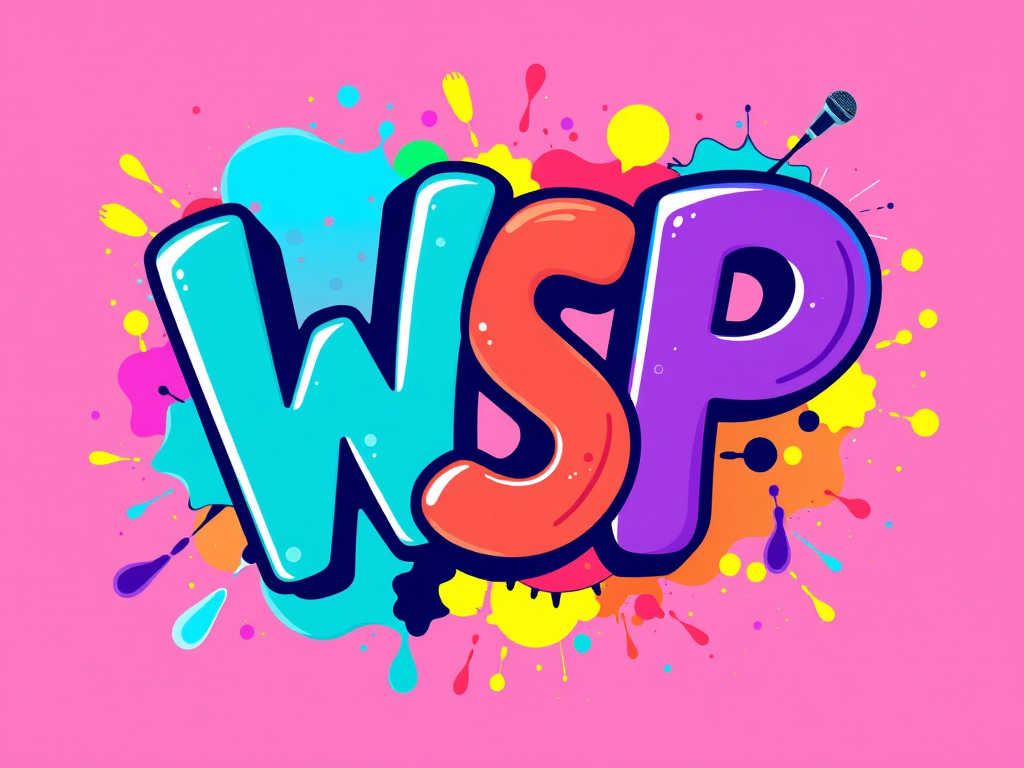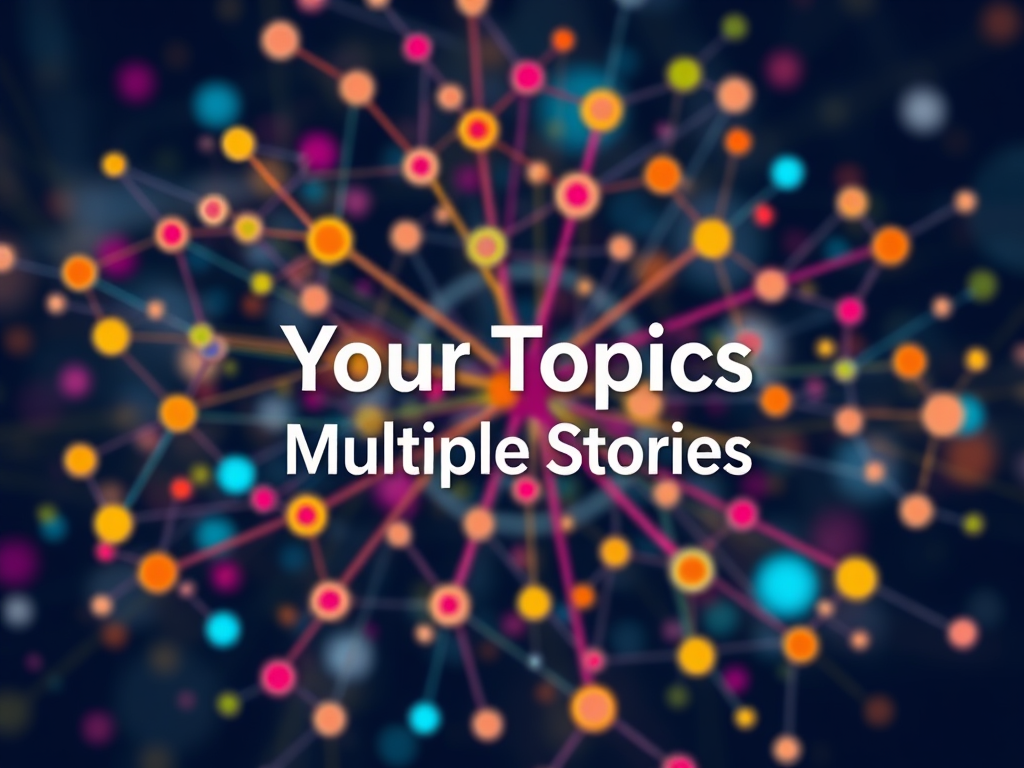In today’s fast-paced digital communication world, text abbreviations and internet slang have become essential parts of our daily conversations. One acronym that frequently appears in text messages, social media chats, and online messaging platforms is WSP. Understanding what does WSP mean and how to use it appropriately can significantly improve your communication skills in both casual and professional settings.
WSP has become increasingly popular among younger generations and digital natives who value speed messaging and efficient texting. Whether you’re navigating Instagram DMs, Snapchat messaging, or WhatsApp chat, knowing the WSP meaning helps you stay current with modern texting culture and online communication trends.
What Does WSP Mean?
WSP is a popular internet acronym that stands for “What’s up?” This text message slang serves as a casual greeting and conversation starter in digital conversations. The WSP acronym has gained widespread acceptance across various messaging platforms and social media platforms, making it one of the most recognizable digital abbreviations in contemporary online communication.
The WSP text meaning extends beyond a simple greeting. It functions as a versatile opener that can:
- Initiate a new conversation
- Check-in with friends or acquaintances
- Express curiosity about someone’s current activities
- Serve as a reconnecting message after a period of silence
- Act as a small talk starter in group chats
WSP slang meaning varies slightly depending on the context and relationship between communicators. Among close friends, it’s often used as a playful, light-hearted greeting. In peer messaging situations, it maintains a friendly yet respectful tone. The acronym has become so integrated into modern messaging that many users employ it without conscious thought about its full meaning.
The popularity of WSP reflects broader trends in computer-mediated communication, where brevity and speed are prioritized. This messaging shortcut allows users to maintain social connections while conserving time and effort in their digital interactions.
Understanding what does WSP stand for is crucial for effective mobile communication. The acronym represents more than just words; it embodies a communication style that values informality, accessibility, and immediate connection in our increasingly connected world.
Is WSP a Real Word?
WSP is not recognized as a traditional word in formal dictionaries like Merriam-Webster. However, it exists as a legitimate digital abbreviation within the context of internet chat language and contemporary slang. The distinction between “real words” and digital shortcuts has become increasingly blurred as online communication continues to evolve and influence conversational English.
In linguistic terms, WSP functions as an acronym rather than a conventional word. It represents the language evolution occurring in digital platforms where texting shortcuts and chat acronyms develop organically within user communities. These communication tools often gain widespread acceptance before formal recognition.
The legitimacy of WSP lies in its functional usage across messaging software and social networks. Digital linguistics experts recognize that computer-mediated communication creates its own vocabulary and grammar rules, making acronyms like WSP valid within their specific contexts.
Modern vernacular increasingly includes digital abbreviations that may not appear in traditional dictionaries but serve essential communication functions in online services and text services. The WSP definition exists primarily within digital communication contexts, where its meaning is universally understood by participants.
Language authorities are gradually acknowledging that digital communication creates legitimate linguistic shortcuts that serve important social functions. While WSP may not be a “real word” in traditional sense, it’s a real and meaningful element of contemporary communication.
How Is WSP Used in a Sentence?
WSP typically appears at the beginning of text messages as a greeting or conversation opener. Its placement and usage follow specific patterns that reflect digital communication conventions and social protocols. Understanding these patterns helps ensure appropriate message timing and contextual messaging.
Here are common ways WSP appears in digital conversations:
Direct Opening:
“WSP! Haven’t heard from you in a while.”
Standalone Greeting:
“WSP?”
With Follow-up Questions:
“WSP? How was your weekend?”
In Group Settings:
“WSP everyone! Who’s ready for tonight?”
Casual Check-in:
“WSP Sarah, everything good?”
The WSP text meaning remains consistent across these usage patterns, but the tone and intent can vary based on relationship context and audience consideration. In peer groups, it maintains an upbeat and casual feeling. Among classmates, it serves as a friendly reconnecting tool.
WSP usage in instant messaging often determines the conversation flow. A simple “WSP” might receive equally brief responses, while “WSP” followed by specific questions typically generates more detailed replies. This interaction pattern reflects the communication norms established within digital platforms.
Understanding how to use WSP appropriately requires social awareness and contextual sensitivity. The acronym works best when the relationship and setting support informal communication and casual interaction. Professional relationships and formal situations typically require more conventional greeting approaches.
Nuances of Tone: When to Use WSP (and When Not To)
Understanding the tone implications of WSP is crucial for effective digital communication. The acronym carries specific connotations that make it suitable for certain contexts while potentially inappropriate for others. Developing emotional intelligence around WSP usage helps prevent misunderstandings and supports positive relationship building.
When WSP Works Well:
WSP excels in casual environments where informality is welcomed and expected. The acronym creates an approachable atmosphere that encourages open communication and social interaction. Several contexts particularly benefit from WSP usage:
Close Friend Interactions: Among close friends, WSP maintains existing social connections and reinforces casual relationships. The familiar tone supports ongoing contact maintenance and creates opportunities for meaningful conversation.
Peer Communication: In peer messaging situations, WSP establishes equality and mutual respect. Classmates, colleagues of similar rank, and members of peer groups often appreciate this direct yet friendly approach to conversation initiation.
Social Media Contexts: Instagram DMs, Snapchat messaging, and similar social media platforms create natural environments for WSP usage. These platforms expect informal language and quick responses, making WSP an ideal conversation starter.
Reconnecting Messages: After periods of limited contact, WSP serves as an effective ice-breaker that acknowledges the gap while maintaining warmth. This usage particularly appeals to digital natives who value efficient communication.
Group Chat Dynamics: In group messaging, WSP can energize conversations and invite participation from multiple members. The inclusive nature of the greeting encourages collective response and social engagement.
Gaming Communities: Online gaming platforms frequently use WSP as a standard greeting among players. The casual nature fits the relaxed atmosphere common in gaming environments.
When to Avoid WSP:
Several contexts require more formal communication approaches than WSP provides. Understanding these communication boundaries prevents professional and social missteps that could impact relationships or opportunities.
Professional Settings: Workplace communication, business emails, and interactions with authority figures typically require professional polish and formal messaging. WSP can appear unprofessional or disrespectful in these contexts.
Academic Environments: Communication with professors, administrators, or in formal academic settings benefits from traditional greetings. WSP may undermine credibility or suggest lack of seriousness.
New Professional Relationships: When establishing business contacts or communicating with unfamiliar colleagues, WSP might create negative impressions. Professional relationships require appropriate greetings that demonstrate respect and competence.
Serious Conversations: WSP may seem inappropriate when addressing serious topics, concerns, or sensitive issues. The light-hearted tone can minimize the importance of significant matters.
Formal Documentation: Any written communication that requires documentation or official records should avoid informal abbreviations like WSP. Professional standards expect complete sentences and proper grammar.
Cross-Cultural Communication: When communicating with individuals from different cultural backgrounds, WSP may cause confusion or misinterpretation. Universal greetings often prove more effective in diverse contexts.
11 Alternatives to WSP Based on Context and Tone
Effective digital communication requires adaptability and contextual awareness. While WSP serves many situations well, having alternative greetings ensures appropriate communication across diverse relationships and settings. These alternatives provide flexibility while maintaining positive social interaction.
1. “How are you?”
This classic greeting offers universal appeal and professional appropriateness. “How are you?” works effectively in both casual and formal situations, making it an excellent alternative to WSP when tone uncertainty exists.
Best contexts: Professional relationships, new acquaintances, formal messaging, cross-cultural communication
Tone implications: Polite, respectful, universally understood
2. “What’s going on?”
This alternative maintains casualness while providing slightly more formality than WSP. It invites detailed responses and demonstrates genuine interest in the recipient’s current situation.
Best contexts: Friends, classmates, casual check-ins, social media messaging
Tone implications: Curious, friendly, engaging
3. “What are you up to?”
This greeting specifically inquires about current activities, making it ideal for conversation starters that seek detailed responses. It shows interest while maintaining casual friendliness.
Best contexts: Close friends, family members, casual relationships, leisure conversations
Tone implications: Interested, casual, personal
4. “How’s it going?”
This versatile greeting adapts well to multiple contexts while remaining approachable. It works effectively in both personal and professional settings without seeming overly formal or too casual.
Best contexts: Work colleagues, acquaintances, mixed groups, versatile situations
Tone implications: Balanced, approachable, professional yet friendly
5. “Everything okay?”
This alternative adds a caring dimension to greetings, particularly useful when following up on previous conversations or checking on someone’s wellbeing. It demonstrates emotional intelligence and genuine concern.
Best contexts: Close relationships, follow-up messages, supportive communication, wellness checks
Tone implications: Caring, supportive, attentive
6. “Long time no talk—how have you been?”
This extended greeting works perfectly for reconnecting messages after significant time gaps. It acknowledges the absence while expressing interest in catching up.
Best contexts: Old friends, former colleagues, reconnecting, relationship renewal
Tone implications: Warm, acknowledging, interested in reconnection
7. “Hope all is well.”
This greeting conveys good wishes while opening communication. It’s particularly effective in professional contexts or when reaching out after difficult periods.
Best contexts: Professional communication, formal check-ins, supportive messages, respectful outreach
Tone implications: Professional, caring, respectful
8. “What’s new with you?”
This alternative specifically seeks updates and new information, making it excellent for friends and family members who communicate regularly. It assumes ongoing relationship and mutual interest.
Best contexts: Regular contacts, family communication, close friends, update requests
Tone implications: Familiar, interested, ongoing relationship
9. “Got a minute to chat?”
This greeting respects the recipient’s time while expressing interest in conversation. It’s particularly useful for longer discussions or important topics.
Best contexts: Busy contacts, important conversations, respectful communication, time-sensitive matters
Tone implications: Respectful, considerate, purposeful
10. “Is now a good time?”
This alternative prioritizes the recipient’s schedule and availability. It demonstrates professional courtesy and consideration for others’ time.
Best contexts: Professional calls, important discussions, respectful outreach, busy individuals
Tone implications: Professional, considerate, respectful of time
11. “Just wanted to say hi 👋”
This modern greeting combines text with emoji to create friendly, casual communication. It’s perfect for light contact without expecting detailed responses.
Best contexts: Social media, casual friends, light contact, social maintenance
Tone implications: Friendly, casual, no pressure
How to Choose the Best Alternative to WSP
Selecting appropriate greetings requires careful consideration of multiple factors that influence communication effectiveness. Successful digital communication depends on matching tone to context, audience, and communication goals. Contextual awareness and social intelligence guide these important decisions.
Relationship Assessment forms the foundation of greeting selection. Close friends and family members typically welcome casual approaches, while professional contacts require formal consideration. New relationships benefit from conservative choices until communication patterns establish themselves.
Platform Considerations significantly impact appropriate choices. Social media platforms like Instagram and Snapchat expect informal communication, while professional platforms require business-appropriate language. Email communication generally demands higher formality than text messaging.
Cultural Sensitivity becomes crucial in diverse communication environments. International contacts may not understand local slang or informal abbreviations. Universal greetings often prove safer choices in cross-cultural contexts.
Timing Factors influence greeting appropriateness. Early morning or late evening messages might benefit from considerate language that acknowledges time sensitivity. Urgent communications require direct approaches, while casual contacts allow flexible timing.
Communication Purpose shapes greeting selection. Business discussions need professional openings, while social conversations welcome casual approaches. Serious topics require respectful introductions, while light topics permit playful greetings.
Response Expectations should guide greeting choices. Detailed conversations benefit from engaging questions, while quick check-ins suit brief greetings. Understanding the desired response length helps select appropriate openers.
Is It Okay to Use WSP in Business Communication?
WSP usage in business communication presents significant challenges and potential risks that professionals must carefully consider. Workplace communication standards typically emphasize professionalism, clarity, and respect—qualities that informal abbreviations may not effectively convey.
Professional settings generally favor complete sentences and traditional greetings over text shortcuts. Business emails, client communications, and formal correspondence require language that demonstrates competence and attention to detail. WSP may undermine these important professional qualities.
Industry variations significantly influence WSP acceptability. Creative industries, tech companies, and startups might tolerate informal communication more than traditional corporations, legal firms, or financial institutions. Understanding industry culture helps guide appropriate choices.
Relationship dynamics within professional contexts also matter. Peer communication among colleagues of similar rank might accommodate casual abbreviations, while communications with supervisors, clients, or external partners typically require formal approaches.
Written vs. verbal communication standards differ significantly. Instant messaging platforms used for internal communication might accept WSP, while email correspondence or official documentation should maintain professional standards.
Risk assessment suggests that WSP poses minimal benefits compared to potential negative consequences in business contexts. Professional reputation, client relationships, and career advancement may suffer from inappropriate informal communication.
Alternative approaches provide safer options for business communication. “Good morning,” “Hello,” or “I hope this message finds you well” convey professionalism while maintaining friendly tone. These alternatives demonstrate communication skills and professional polish.
Why It’s Important to Know These Variations
Understanding WSP alternatives and contextual appropriateness significantly impacts communication effectiveness and relationship success. Modern communication requires flexibility and adaptability across diverse platforms, audiences, and situations. Communication competence increasingly determines personal and professional success.
Digital literacy now includes understanding when informal abbreviations are appropriate and when formal language is necessary. This knowledge prevents misunderstandings, maintains relationships, and demonstrates social awareness. Effective communicators adapt their language to match expectations and achieve goals.
Professional development benefits significantly from strong communication skills. Employers value individuals who can navigate different communication contexts effectively. Understanding greeting variations demonstrates emotional intelligence and cultural competence—valuable workplace skills.
Relationship building depends heavily on appropriate communication choices. Using the right greeting at the right time shows respect, consideration, and social awareness. These qualities strengthen connections and create positive impressions.
Cross-generational communication becomes increasingly important as workplaces include multiple generations with different communication preferences. Younger generations might expect digital abbreviations, while older generations prefer traditional approaches. Flexibility helps bridge these differences.
Global communication requires understanding of cultural differences and language barriers. Simple, clear greetings often work better than local slang or abbreviations in international contexts. Cultural sensitivity improves communication outcomes.
Personal branding through communication affects how others perceive your professionalism, intelligence, and social skills. Consistent, appropriate communication builds positive reputation and opens opportunities.
Final Thoughts
WSP meaning represents more than just “What’s up?”—it symbolizes the evolution of digital communication and the importance of contextual awareness in modern interactions. Understanding when to use WSP and when to choose alternatives demonstrates communication maturity and social intelligence.
Effective digital communication requires balancing efficiency with appropriateness, casualness with professionalism, and personal preference with audience expectations. WSP serves valuable functions in appropriate contexts while alternative greetings provide flexibility for diverse situations.
The key to successful communication lies in developing contextual sensitivity and maintaining flexibility across different platforms, relationships, and purposes. Whether you choose WSP or opt for alternatives, understanding your audience and context ensures positive communication outcomes.
Modern communication skills include both digital literacy and traditional language competence. Mastering this balance creates opportunities for meaningful connections, professional success, and effective relationship building in our increasingly connected world.
Digital communication will continue evolving, but the principles of appropriate, respectful, and effective messaging remain constant. Understanding WSP and its alternatives provides a foundation for navigating future communication challenges and opportunities.

Catherine Frank, founder of BiblicalHorizon.com, shares daily prayers and Bible verses to nurture spiritual growth. With a lifelong passion for scripture and prayer traditions, she creates accessible spiritual content that resonates with both seasoned believers and newcomers seeking divine connection.



